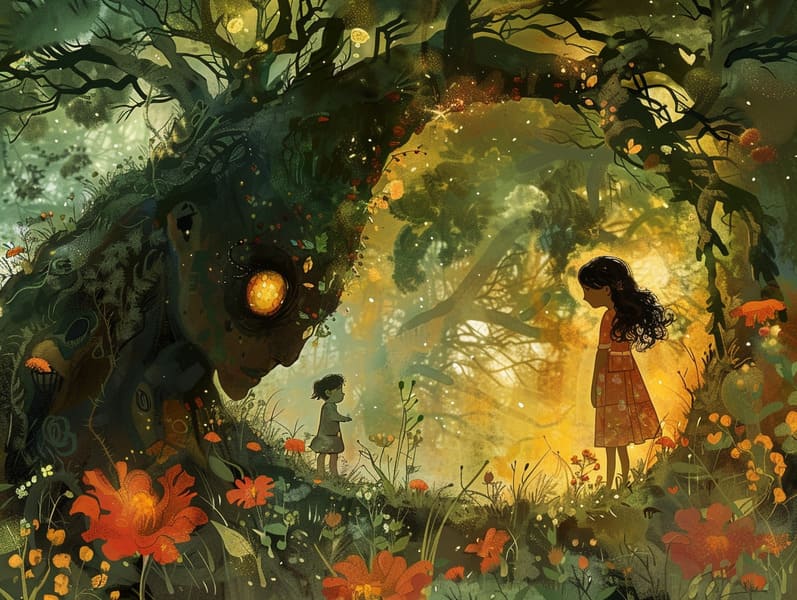The Origins of Children's Fairy Tales with Its Lasting Majesty.

Fairy tales for kids have old origins. These tales have been passed down from one generation to the next far before they were ever inscribed. They came from a variety of cultures, including African traditions. They were initially transmitted among mature audiences, often carrying themes and messages pertaining to the societal norms and beliefs of the time.
The Brothers Grimm, Jacob and Wilhelm, were among the first to assemble many of these beloved narratives. Their volume, "Grimm's Fairy Tales," included stories like "The Little Glass Slipper," "Little Brother and Little Sister," and "The True Story of Snow White," which have since become staples in the world of timeless fairy tales. Similarly, Hans Andersen's magical stories, such as "The Little Mermaid," and "The Little Duckling," have touched hearts worldwide, guaranteeing their place in the pantheon of beloved fairy tales.
Though they are centuries old, classic fairy tales remain as meaningful as ever, especially as children's night stories. These fantastical tales are now available in different formats, including richly illustrated books, whimsical animations, and online storybooks.
Their continued relevance can be ascribed to several fascinating points:
Key Lessons: Ancient fairy tales often teach important moral lessons. Narratives like "The Wolf and the Liar" teach the value of honesty, while "The Race of the Tortoise and the Hare" point out the benefits of persistence and unpretentiousness. These stories offer young ones clear distinctions between virtue and vice, forming their moral compass in a subtle yet meaningful way.
Warmth and Understanding: Old fairy tales frequently showcase beings facing obstacles and hardships, urging audiences to connect with their struggles and support their triumphs. For instance, "Beauty and the Beast" shows us the significance of looking beyond appearances to realize the inner core of a being, cultivating tenderness and knowledge.
Cultural Appreciation: Many timeless fairy tales are imbued with the cultural contexts from which they emerged. Discovering these tales can provide captivating looks into different heritages, advancing a sense of global insight and appreciation.
Creativity and Fantasy: The fanciful elements in fairy tales—supernatural elements—boost children’s creative thoughts. These narratives move readers to supernatural realms, unleashing fantasy ideas and a sense of awe that stays a lifetime.
Classic fairy tales are not only fascinating but also pedagogical. They act as spellbinding tools in developing various cognitive and affective skills in kids. When ancient fairy tales are spoken out loud, they foster speech development by presenting new vocabulary and complex sentence structures. This practice also develops listening abilities and mental focus, as young readers track the narrative, enthusiastic to see what happens next.
Furthermore, analyzing the themes and characters of timeless fairy tales can promote problem-solving abilities and thinking skills. Children are shown to discern patterns, anticipate outcomes, and make sense website of cause and effect. These reflections also support children voice their thoughts and feelings, cultivating their emotional intelligence.
In today’s digital era, the availability of digital fairy tales has made these stories more attainable than ever. Online resources and applications feature vast collections of popular fairy tales that can be experienced or listened via anytime, anywhere. Fairy tales voiced are particularly popular, offering an captivating way for little ones to relish these delightful tales. Read-aloud stories and voiced videos lead characters and settings to life, often complemented by charming musical scores and harmonies that heighten the narrative adventure.
The everlasting appeal of traditional fairy tales lies in their ability to adapt to today's society while staying true to their main lessons. Contemporary revisions of these tales often show more diverse characters and modern settings, making them accessible to today’s audience. However, the underlying themes of fortitude, humanity, and fair play remain unchanged, continuing to resonate with young listeners of all ages.
Old fairy tales also offer a sense of familiarity and understanding. They render accessible a well-ordered narrative with a definite beginning, middle, and end, often winding up with the ending of conflicts and the triumph of right over wrong. This predictability can be placating for young readers, making available a sense of assuredness in an inconstant world.
Classic fairy tales continue to mesmerize and coach new generations, maintaining their fascination and applicability in modern society. As nighttime stories for kids, they highlight a perfect blend of magic and knowledge, nourishing moral values, empathy, and creativity. The accessibility of free fairy tales online and the widespread nature of fairy tales narrated ratify that these traditional fairy tales remain within reach to new generations.
By conserving and disseminating these stories, we continue to celebrate the rich tapestry of mythology and cultural heritage. Whether you are accessing a gorgeously illustrated book, exploring a digital library, or hearing an voice book, the loveliness of traditional fairy tales is always within reach. These fairy tales show us of the timeless force of tales and its ability to link us across eras and regions.
No matter if you are accessing a beautifully illustrated book, perusing a internet library, or hearing an narrated book, the captivation of Grimm's fairy tales is always within reach.
These fairy tales remind us of the consistent power of storytelling and its ability to unite us across epochs and places, casting a charm that delights and instructs alike.